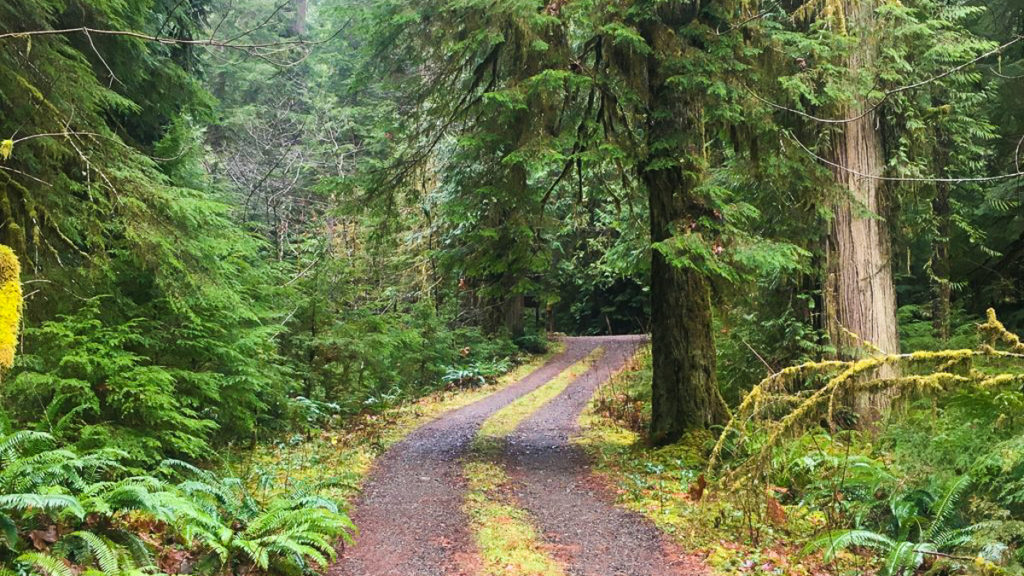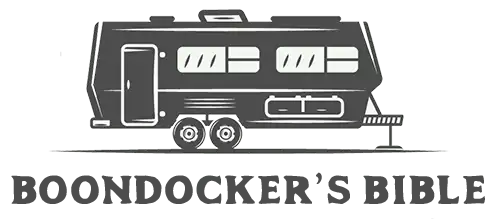These official rules and regulations for camping at Olympic National Forest were gathered from Orders issued by the Supervisor of Olympic National Forest, along with information published by the U.S. Forest Service, and from the U.S. Code of Federal Regulations…

Olympic National Forest, Camping Rules
Passes and Permits
Purchase of passes or permits are not required for boondocking (dispersed camping) inside most of Olympic National Forest.
- However, there are some hiking trails in the wilderness areas which will require either a day-use fee or an equivalent pass. Tent camping is permitted along these trails. While there are no permits required for camping, you still need to pay a fee or have an equivalent pass to get on the trail. (see, “Recreation Sites Where Day-Use Fees are Charged”, Olympic National Forest).
- There are several developed campgrounds in Olympic National Forest that will require per-night fees. (See, Camping & Cabins, Olympic National Forest).
Areas Off-Limits to Camping
Olympic National Forest allows camping anywhere and everywhere inside of its boundaries. However, the forest may close certain areas from time to time depending upon the season, potential for fire, or to repair roads. Refer to the latest forest orders to find out which areas are currently closed. (See, “Forest Orders”, Olympic National Forest).
Maximum Length of Stay
As of June 15, 2020, the maximum length of stay for camping inside Olympic National Forest is as follows (See, “Forest Orders”, Olympic National Forest)…
- 21 days per year in areas outside of developed campgrounds.
- 14 days per stay (no per year limit) inside developed campgrounds.
Campfire Restrictions
Campfires are allowed for much of Olympic National Forest. Campfire permits are not required. But there are certain areas where campfires are restricted, and certain times when there may be burn bans in place…
- Outside of developed campgrounds, campfires are allowed below 3,500 feet elevation. Above 3,500 feet, campfires are banned. (See, Rules and Regulations, Olympic National Forest).
- Inside developed campgrounds, campfires are restricted to metal containers provided at each campsite, or your own metal containers, barbecue grill, or cooktop.
- Check for current burn bans. (See Fire Management, Olympic National Forest).
Gathering Firewood
You’re free to gather dead and down firewood to build a campfire while camping at Olympic National Forest. (See, Forest Products Permits, Olympic National Forest).
- You may not cut down standing trees, dead or alive.
- You cannot transport any wood for home use or for resale (a permit is required).
Camping Setbacks
When camping outside of developed campgrounds (see Dispersed Camping, Olympic National Forest)…
- Your campsite must be 200 feet or more from a body of water (lake, pond, stream, river)
- Your campsite must be 1/4 mile or more from a developed campground or trailhead.
Fireworks and Explosives
Lighting off fireworks and explosives is prohibited year-round at Olympic National Forest. (see, Rules and Regulations, Olympic National Forest)
Weapons
You can bring your guns into Olympic National Forest for target shooting and self-defense. There are rules that apply, however. (see, Rules and Regulations, Olympic National Forest)…
- You cannot shoot inside or within 150 yards of a residence, building, campsite, developed recreation site or occupied area.
- You cannot shoot across or on roads or bodies of water, or where people or property are exposed to injury or damage.
- You cannot shoot into a cave.
- You cannot shoot into areas that cause resource damage. Don’t shoot trees, rocks, stumps, or non-game animals.
- Firing tracer bullets or incendiary ammunition is prohibited. (see, CFR Title 36, Chapter II, § 261.5 Fire)
Vehicle Rules
Vehicles are required to remain on routes designated on Olympic National Forest’s “Motor Vehicle Use Maps”. (see, Rules and Regulations, Olympic National Forest)…
- Vehicles may be driven off of roads, up to 150 feet, as long as they don’t damage plants or animal habitats.
- You cannot build your own roads, nor clear out plants and trees to get your vehicle into some place. (see, CFR Title 36, Chapter II, § 261.10 Occupancy and use)
- Vehicles (including bicycles) are prohibited within any areas classified as “wilderness”. (see, Wilderness, Olympic National Forest).
Motor Vehicle Use Maps
These are the Forest’s official road maps. They indicate which roads are open to street-legal vehicles only, and which are open to both street-legal and non-street legal vehicles. For further discussion on this read, “How to Use Motor Vehicle Maps (MVUM) to Find Free Camping“.
- Olympic National Forest, Hood Canal Ranger District, 2012 (PDF)
- Olympic National Forest, Pacific Ranger District, 2012 (PDF)
Nude Camping
Olympic National Forest does not address the subject of public nudity in addition to regulations concerning “Disorderly Conduct” (see below).
However, state laws still apply to U.S. Forest Service lands…
- The Revised Code of Washington under (RCW 9A.88.010 Indecent exposure.) prohibits someone from intentionally exposing themselves in an open or obscene way while also knowing that such exposure will cause reasonable affront or alarm. This excludes breastfeeding or expressing breast milk. (see, Indecent Exposure, Washington State Legislature)
Disorderly Conduct
The following are acts prohibited (see, CFR Title 36, Chapter II, § 261.4 Disorderly conduct)…
- Inciting others into violence,
- Fighting, and
- Causing public inconvenience, annoyance, or creating alarm by making unreasonably loud noises.
Flying Drones
Drones (unmanned aircraft systems UAS) are allowed inside Olympic National Forest. The Forest does not have any additional rules aside from the national rules adopted by the U.S. Forest Service. Below is a summary of the national rules (see Know Where to Fly, U.S. Forest Service)…
- Drones cannot fly above 400 feet, and must remain clear of obstacles.
- Drones cannot take off from, land inside, nor fly over areas designated as “wilderness”. Olympic National Forest has five such areas (see, Wilderness, Olympic National Forest).
- Drones cannot be flown in areas where the FAA has established temporary flight restrictions. (see Temporary Flight Restrictions, Federal Aviation Administration)
- Drones cannot be flown over or near wildlife.
Pets
Pets are allowed inside Olympic National Forest, with certain restrictions.
- Outside of developed areas (campgrounds, trails, trailheads), pets do not have to be leashed or confined, however they must be under your control at all times.
- Inside developed areas, pets have to be both leashed or confined, and under your control at all times.
Sanitation Rules
The following are prohibited (Reference, CFR Title 36, Chapter II, § 261.11 Sanitation)…
- Possessing or leaving behind, trash, litter, debris in an exposed, unsanitary condition,
- Dumping sewage or waste water (gray water) on the ground, and
- Bringing in trash from home to dump into a forest trash container.
Pooping into a hole is still permitted. Olympic National Forest requires you to dig at least six inches deep, and at least 200 feet from a body of water. (see “Dispersed Camping”, Olympic National Forest).
Additional Information
- Olympic National Forest Official Website, U.S. Forest Service
- National Forest Rules for Developed Campgrounds, Boondocker’s Bible Legal Database
- All National Forest Articles, Boondocker’s Bible Knowledgebase
- All Articles About Camping in Washington, Boondocker’s Bible Knowledgebase
Phone Numbers
- Olympic National Forest, main office – (360) 956-2402
- Hood Canal Ranger Station – (360) 765-2200
- Pacific Ranger Station (Forks, WA) – (360) 374-6522
- Pacific Ranger Station (Quinalt, WA) – (360) 288-2525

